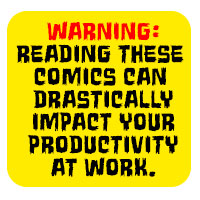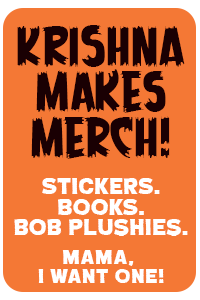VillainTech: Comic Book Comics – Our Artists At War!

Some comics you have to dig through to see if they’re good. No need with Comic Book Comics: Our Artists At War! The cover features a wild image of a giant flaming comic book smashing a military blimp and crushing tanks as desperate gunners look up and at the reader.
The team of Fred Van Lente and the illustrator Ryan Dunlavey (no relation to Anton) get right down to brass tacks with ribald just-the-gags-ma’am writing. Aside from the occasional full-panel art, every sentence or two is lettered with a hilarious accompanying panel that is perfectly suited to the words.
OAAW is a scholarly work on the artists of the 1930s, 40s and 50s. While solidly researched, the writing is a rare combination of eloquence and madcap humor. If you’re not getting a funny tidbit of information from the text, Dunlavey makes sure to illustrate it in an action-packed or riotous fashion.
The issue starts with the dynamics of comic writing in crowded writers’ “bullpens” and shows the seamy odds they faced, lavished with quotes from Jules Pfeiffer and Joe Kubert. A map shows how Manhattan was the birthplace of the mainstream comic scene. From there, it’s a synopsis of the big boss players of the time: Lloyd Jacquet; copycat king Martin Goodman; the shady Harry Donnenfeld; Max Fleischer; Walt Disney. Then a disillusioned young Stan Lee and Jack Kirby enter into intrigues with Jerry Siegel.
World War II arrives, setting the comic world on its ear, and the issue details the roles of Kirby, Lee, Charles Addams, and Will Eisner; we learn how Eisner’s efforts led comics for a purely propaganda-based role into training manuals.
Disney’s ugly side as a strikebuster is touched on before the comic mentions his change of focus from movies to work for the armed forces. The issue recounts unsettling anecdotes where a stressed-out executive used to hurl after every meeting with Disney and an artist knew his boss had checked his work overnight from a Chesterfield butt left in his ashtray. Then OAAW touches on Walt’s growing bunker mentality and aim toward a 3-D demesne he could keep dictatorial over: Disneyland. At the end of the WWII section, Kirby is depicted as almost losing his life to an art-related job: scouting hot zones in Europe for enemy troops and sending back sketches of anything suspicious.
Post-war, with domestic tranquility arriving hand in hand with a baby boom, the female demographic begins to have its say in the comic world as stock in superheroes plummets. The famous team of Simon and Kirby, by then battle-hardened and taking smack from no one, launches Young Romance, selling an amazing 92% of the first 500,000 issues. As an amusing side note, Martin Goodman releases a series of mediocre copycats, true to form. The humorous narrative doesn’t let up, with freelancers pranking Simon and Kirby with raunchy drawings tucked in final drafts of YR.
For a brief time, the comics industry flourishes unchecked. But then the innocence of the medium fades with the ghoulish turnaround of EC Comics and the BDSM-birthed Wonder Woman. Al Feldstein makes strides in breaking the factory mentality, letting artists introduce their own styles, as one Dr. Frederic Wertham, forensic psychiatrist, sets the stage for a colossal showdown on Capitol Hill.
What will happen? A big teaser ad for issue #3 promises R. Crumb, and Andy Warhol and more of the insidious Doctor.
I can’t wait. Comic Book Comics is a technically sound treat and would make Scott McCloud proud.
Writing/Dialogue: A rollicking “way it was” look that belies the goofy PSA movies of the time. Imagine Archie Bunker telling you all about it, no holds barred. A
Art: Things look cartoony, which is fine considering the subject matter. There are never any dull panels and there is great synergy between the words and images. A lot of the fun is that neither hogs the spotlight 100% of the time, instead sharing the pages. A
Story: A fascinating, trivia-filled walk through the world of yesterday’s pop media. Something for everyone, from the smoldering anti-authoritarian to the bag and board-fondling aficionado. A
Characters: A little heavy on the anecdotal side, but what anecdotes! A-
Originality: A well-assembled historical study of the comics that made the country go round, a grand stage filled with gritty real-life heroes and checkered founding fathers. A+
Overall: This is the most entertaining account of anything historical I’ve read. Under-the-radar text and over-the-top illustrations (wait till you see the first cover of William Gaines’s EC Comics, and the real face behind Young Romance’s advice columns), with many laugh-out-loud moments and surprising revelations from the rascally formative years of the industry. A+



tpiro
November 19, 2008 at 3:53 pmKrishna, I was confused by this blog posting. Is this your writing and endorsement, or are you borrowing this review from VillainTech?
Dave Bergschneider
November 19, 2008 at 8:38 pmHi tpiro,
This is a VillainTech article puplished on PCWeenies and then syndicated back on VillainTech a few days later. Simply an effort of cross promotion between our sites.